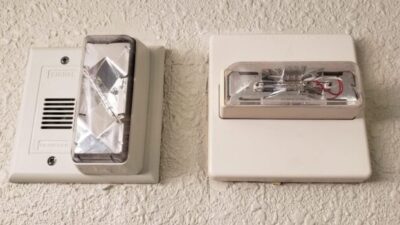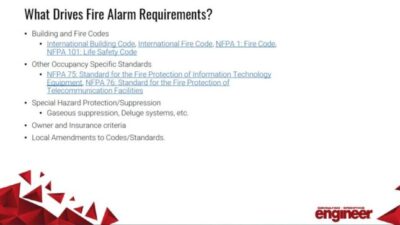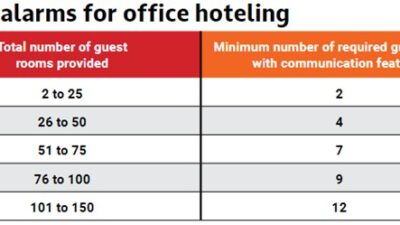Although sprinklers have long been recognized as the means of choice for protecting warehouse/storage occupancies, in recent years, smoke detectors, have played an increasing role in these facilities. The introduction of such technology in these non-typical occupancies has opened a Pandora's Box for fire-protection engineers, who find themselves having to address concerns about false-alarm trip...
Although sprinklers have long been recognized as the means of choice for protecting warehouse/storage occupancies, in recent years, smoke detectors, have played an increasing role in these facilities. The introduction of such technology in these non-typical occupancies has opened a Pandora’s Box for fire-protection engineers, who find themselves having to address concerns about false-alarm trips due to environmental conditions, actuation delays due to stratification, combustible materials located high above the floor. Fortunately, a number of new products and approaches are addressing this dilemma.
Perceptions can be everything
For whatever reason, there is a sustained belief that storage occupancies produce a “dirtier” environmental condition than that typically encountered by a smoke detector. This translates into an assumption that such environments will be more likely to cause false-alarm trips. It truly remains to be tested as to how a warehouse is any dirtier than an office building, but that argument is not germaine to the problem at hand: Proving that smoke detectors can distinguish between smoke and dirt.
There are currently several methods for dealing with a dusty environment. The first involves programming the smoke detector itself to offset the buildup of dust over time. The second method—and one used in extremely dirty environments, such as coal conveyors—involves employing a smoke detector that is equipped with a fan that literally blows away dust and dirt keeping the chamber clean.
The second obstacle obstructing the use of smoke detectors in warehouses is properly accounting for stratification. The concern over the subject originates in NFPA 72, The National Fire Alarm Code which spells out specific guidelines for dealing with the phenomenon. NFPA 72 defines stratification as a halting of the upward movement of smoke due to a loss of buoyancy. In other words, if the upward force stops, in theory, the smoke will remain at an undetermined level beneath the detector, delaying an alarm or bypassing its function altogether.
NFPA 72 addresses this problem by providing information as to how to calculate the stratification layer. In a nutshell, the standard suggests that smoke detectors be placed more closely together to minimize the delay in response. While good advice, it is only the first step. To properly space detectors, engineers must turn to performance-based design and fire modeling.
Air sampling
In protecting warehouses, it must also be recognized that a typical warehouse fire is more severe than that encountered in an office or residential occupancy. It must also be noted that the combustibles themselves will often be higher, as goods are stored vertically to optimize space. One way to deal with this challenge is to employ air-sampling smoke detectors, of which there has been a recent influx of systems installations. These detectors are located in the particular area of concern and draw samples from the space via a series of tubes. The smoke concentration is then measured by the detector and alarms can be set for various levels of smoke.
Commission, commission, commission
As discussed, concerns about false trips and stratification are being addressed by today’s technology. However, many consulting engineers forget about a very simple, but critical option—testing and maintaining these detectors before and after they’re installed. A big part of this problem stems from the fact that detectors reside on the ceiling and may not be accessible without specialized equipment. Although this may prove to be an inconvenience, NFPA 72 clearly requires the need for the testing and maintenance of these devices—a matter too often neglected during both design and installation phases, and a step no engineer should frown upon.
How to use smoke detectors in warehouses
Program detectors to account for dust buildup
Model the system
Commission the system



